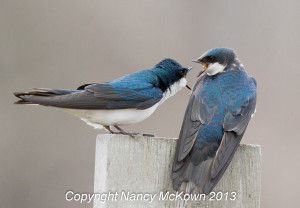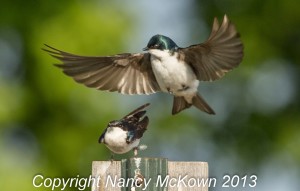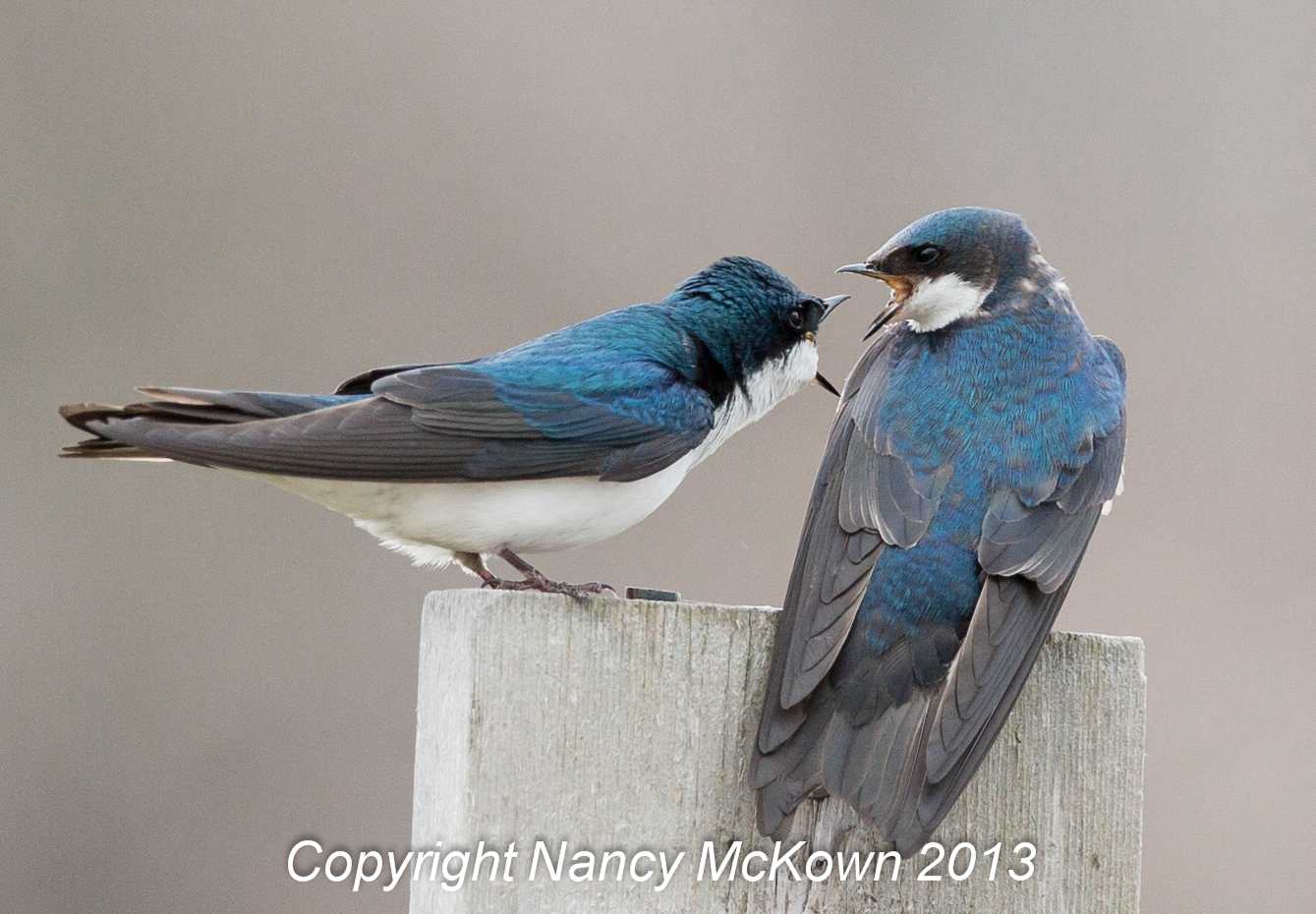Capturing Speed, Movement & Energy in Bird Photography
Capturing speed, movement, and energy of multiple birds makes photos more interesting. The take off and landing shots are captivating because you can see how birds contort their bodies to do what we will never be able to do.
Photographing Tree Swallows
My goal for these photos was to capture the coming together of speed, movement and purpose/personality. This meant that I had to minimize the distractions, keep a cool background, find a bird that I had not photographed before, AND tell a story.

of the tree swallows would give in and fly away. Nope. A very gray day – facing a parking lot, so there was no greenery in the background.
Good light, –Notice the blue in the feathers –boring background concentrates the eye
on the squawkers.
I took my camera to a local park to observe tree swallows. The tree swallows in this area have banded together to chase away all other birds. They have taken over every single blue bird house in the park.
Using A Monopod for Quick, Easy Setup of the Camera
To capture the activities of more than one bird, I needed to be able to quickly move the camera while at the same time keeping the camera stable. I attached my camera/lens to my monopod. Monopods are easy to travel with, light weight, easy to set up, and take up less space than my tripod.
As always, I’m there early, so the light is soft and complimentary. There are almost no trees near the bird house to provide shade. I setup my equipment so my back is to the light. Since I have to hold the monopod and I planned to be there awhile, I brought a 3 legged stool. I did not bring the tripod and remote because I did not plan to fix my camera on the spot. I wanted to be versatile and be able to swivel the monopod to capture the action.
NOTE: Being outside of your car and close to the subject does tend to make the birds nervous. It’s been my experience that to birds, cars are less scary than humans outside of cars.
AI Servo Focusing on Canon DSLR Cameras
Spot focusing is an option, but since I’m hoping to capture multiple birds, I widen the camera’s focusing gaze and set it to best respond when subject movement can be unpredictable. “AI Servo” is Canon’s predictive autofocus system. It continuously refocuses and tries to predict where the subject will be during the next focus”. If your camera has some sort of predictive autofocus, use it, so your shutter finger is not the only tool you have to help track focus.
Setting the Depth of Field for Multiple Birds
I set the shutter preferred to around 1/2000-1/2500 sec -and check what the aperture and ISO calculate out to be. Tree swallows are much bigger than hummers, and my setup is very close to my subjects. More of the view finder is filled with bird, so I’m not too concerned when I see a higher ISO. I let the ISO 2500 stay. As the morning gets brighter, that number will go down.
It’s bright enough so the aperture is not wide open at 2.8. I want more clarity in my depth of field just in case I get a chance to shoot multiple birds that are different distances away from the camera. A 2.8 aperture will blur the background and possibly one of the birds. I think about switching to manual mode and setting the aperture and shutter speed. I decide to leave it on shutter preferred because the AI Servo tracking on the camera will tighten up the aperture as needed when it tracks multiple subjects.

ISO 200; Aperture 3.5; 1/2000 second
Assessing the Photographs
Overall, I think I accomplished my goal. I’m not happy with the background of the last photo. It’s pretty, but also distracting. I had to zoom significantly to minimize the background. The first photo’s background is quite grey, the viewer’s eyes are focused on the birds squabbling.









